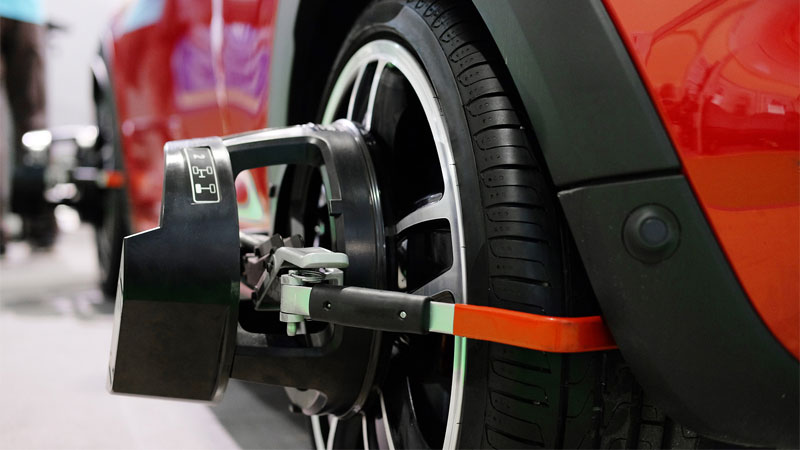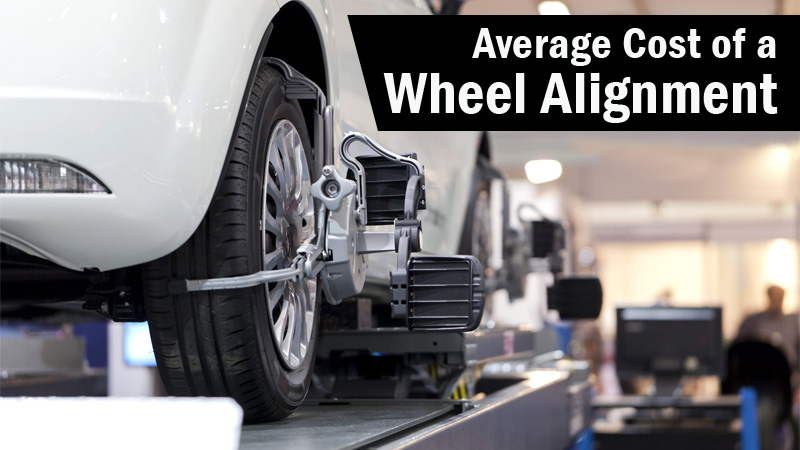As most motorists are well aware, tires are anything but cheap to purchase and continue to increase in cost with each passing year. For this reason, it is easy to justify going through a little additional effort to ensure that your tires are maintained in the best way possible.
This level of attention to detail includes having your vehicle’s wheels aligned at regular intervals. Doing so not only prevents abnormal tire wear, thereby extending tire life as a whole, but also plays a pivotal role in ensuring that a vehicle handles and tracks as specified by its manufacturer.
However, those pondering the notion of having their vehicle’s tires aligned often are left with a host of questions. Luckily, most of these quandaries can be easily answered, providing consumers with additional peace of mind.
Read on to learn more about having your vehicle’s tires aligned, including how much you should expect to pay for such services.
See Also – How Much Does Tire Balancing Cost?
Purpose of a Wheel Alignment

A vehicle’s front end is composed of many different components, all of which work together to achieve optimal operating efficiency. However, to operate optimally, these components must all be in proper adjustment, thereby ensuring that the geometry of a vehicle’s front end is within specification.
Proper front-end alignment, or a lack thereof, is generally reflected in the orientation of a vehicle’s tires, in relation to the road’s surface. Poor front-end geometry can cause a vehicle’s tires to wear regularly, or at an expedited pace.
Having a vehicle’s wheels aligned remedies poor front-end geometry, and returns such adjustments to factory specification. This process typically involves adjusting a vehicle’s toe, caster, and camber.
Types of Wheel Alignment
There are several different types of alignment procedures. The exact design of your vehicle dictates which of these services will be required. The most common of these procedures include front-end alignments, thrust alignments, and four-wheel alignments.
Front-End Alignment
As its name would suggest, a front-end alignment restores all front-axle angles and measurements to within specification.
Thrust Alignment
A thrust alignment accomplishes this as well, while also squaring a vehicle’s rear wheels to those of the front end.
Four-Wheel Alignment
A four-wheel alignment adjusts all front and rear axle angles and is typically performed on 4WD or AWD vehicles. Additionally, four-wheel alignments are also conducted on FWD vehicles with independent rear suspensions.
Where to Go For a Wheel Alignment

While virtually all dealerships offer alignment services, they tend to be among the most costly places to have such work done.
Luckily, most major chain-type service centers also offer alignment services of their own, often at a significantly reduced price. Some of the most notable of these service centers include Firestone, Pep Boys, and Midas.
However, it is worth mentioning that a few service center chains, such as Walmart, do not offer alignment services. Though these shops still offer additional services, such as tire rotations, some have opted out of performing more complex work, such as alignments.
Average Wheel Alignment Cost

The cost associated with alignment services tends to vary based on a number of factors. However, one can generally expect to pay between $50-$200 to have their vehicle’s tires aligned.
The lower end of this price spectrum largely pertains to front-end alignments, conducted at smaller, locally-owned shops with more conservative hourly labor rates.
On the other end of the spectrum, are four-wheel alignments, completed at the dealership. This is especially true when such work is conducted on luxury or performance vehicles, which often require additional labor to complete properly.
Additionally, higher alignment prices can be expected in the case of any vehicle, on which tie rod ends or various adjusters are frozen, thereby requiring additional time and effort to free.
Excluding these variables, the price range associated with getting a vehicle’s tires aligned tightens significantly. The “true” average cost of such services tends to fall within a range of $75-$150.
On occasion, both dealerships and chain-type service centers will also offer coupons or vouchers for discounted alignment services. This can be worth keeping in mind for those who are both opportunistic, and thrifty.
How Long Does a Wheel Alignment Take?

Under most circumstances, an alignment will take approximately one hour to complete. However, this figure is far from absolute, as a number of variables can come into play during an alignment, any of which can prolong the length of service to a degree.
All vehicles differ slightly, in the way that their various front-end adjustments are made.
Naturally, many older vehicles that require shimming to correct out-of-spec conditions take longer to align than many late model cars, trucks, and SUVs. Additionally, issues relating to seized adjusters or frozen tie rod ends can slow service as well.
How Often Should You Get a Wheel Alignment?
Opinions differ regarding how often a vehicle’s tires should be aligned. While some shops recommend getting an alignment once per year, others specify that alignment is not required more often than once every 2-3 years. If in doubt, it is best to side with caution and opt for the former of these two recommendations.
It is also helpful to consult your vehicle’s owner’s manual when attempting to determine how often your tires should be aligned. Most manuals of this sort list such information within their “General Maintenance” chapter.
Can You Align Your Own Wheels to Save Money?

Simply put, it is indeed possible to align your own wheels, in a bid to save money. However, doing so will likely prove to be more than most vehicle owners want to tackle.
This is due to the fact that a vehicle must be perfectly level before measurements are taken, and any adjustments are made. Since most garage floors are not completely level, this will generally require shimming.
Most measurements taken during DIY alignment are recorded with the use of a laser-level of a chalk line. Specialty equipment, such as an oxygen/acetylene torch is often required to free up frozen tie rod ends. Therefore, one must come armed with the proper tools, and ample knowledge, when attempting to align their own wheels.
- History of the Chevrolet SSR: The Retro-Styled Convertible Pickup - Apr 25, 2024
- The History of the BMW M Coupe (the “Clown Shoe”) - Mar 26, 2024
- The History of the Ford Flex - Feb 28, 2024

